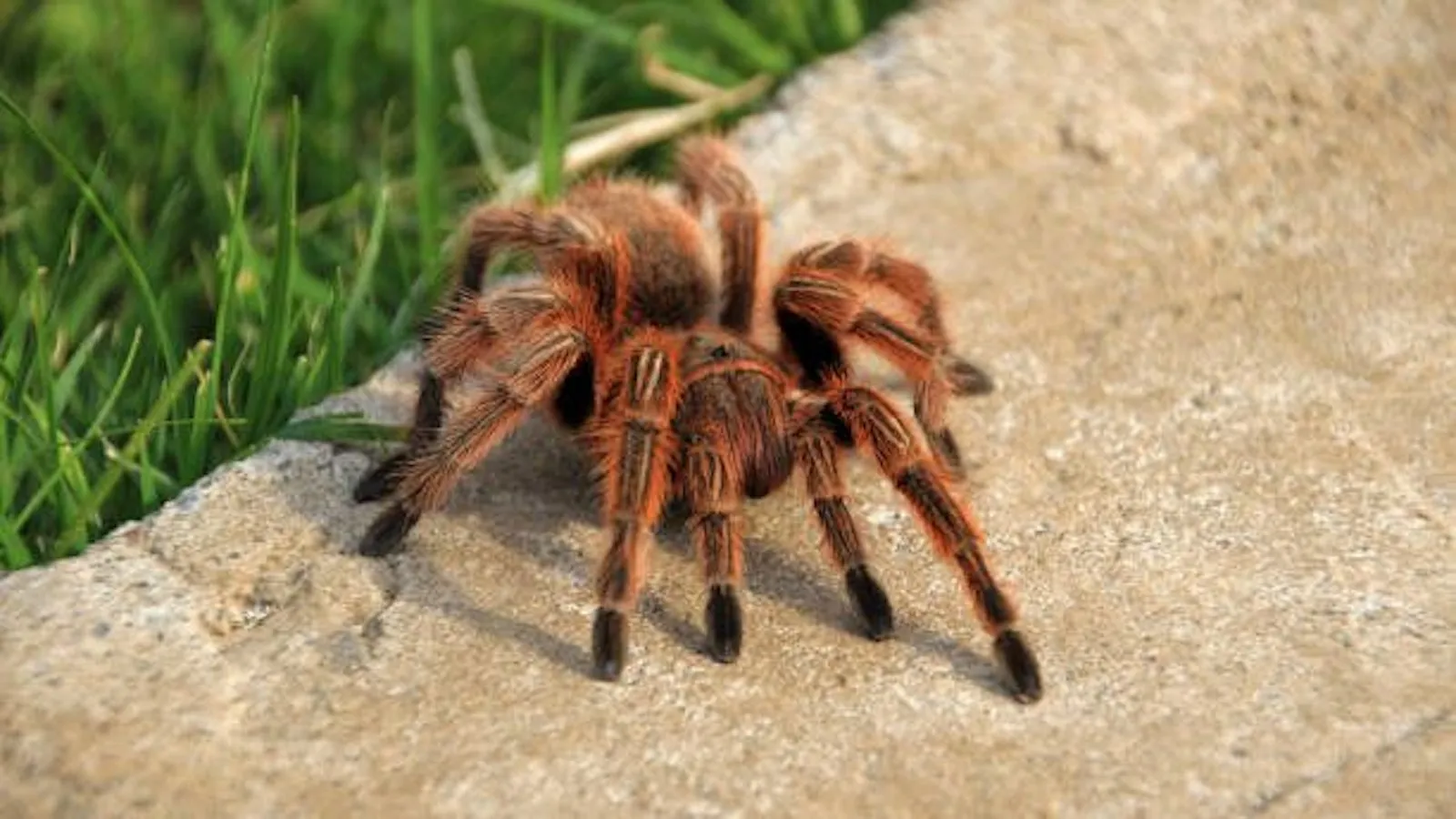Rose Hair Tarantula: An Overview
The Rose Hair Tarantula (Grammostola rosea), also known as the Chilean Rose Hair Tarantula, is a popular pet due to its docile nature, relatively low maintenance requirements, and stunning appearance. These arachnids, native to the arid regions of Chile, Bolivia, and Argentina, have gained a considerable following among both novice and experienced pet owners. Their relatively long lifespan, which can reach up to 20 years for females, further adds to their appeal. This guide provides comprehensive information on how to care for a Rose Hair Tarantula, ensuring its health, happiness, and longevity. From habitat setup to feeding and handling, we’ll cover everything you need to know to become a responsible and knowledgeable Rose Hair Tarantula owner. The information below will help you understand the needs of this fascinating creature and provide you with the knowledge to offer the best care possible.
Understanding Rose Hair Tarantulas
Before bringing a Rose Hair Tarantula home, it’s crucial to understand their specific needs and behaviors. This understanding will allow you to create an environment that mimics their natural habitat, reducing stress and promoting overall well-being. Rose Hair Tarantulas are terrestrial spiders, meaning they spend most of their time on the ground. They are known for their calm temperament, making them a good choice for those new to tarantula ownership. However, they are still wild animals and should be treated with respect. By familiarizing yourself with their unique characteristics, you’ll be better equipped to meet their needs and enjoy their company.
Origin and Habitat
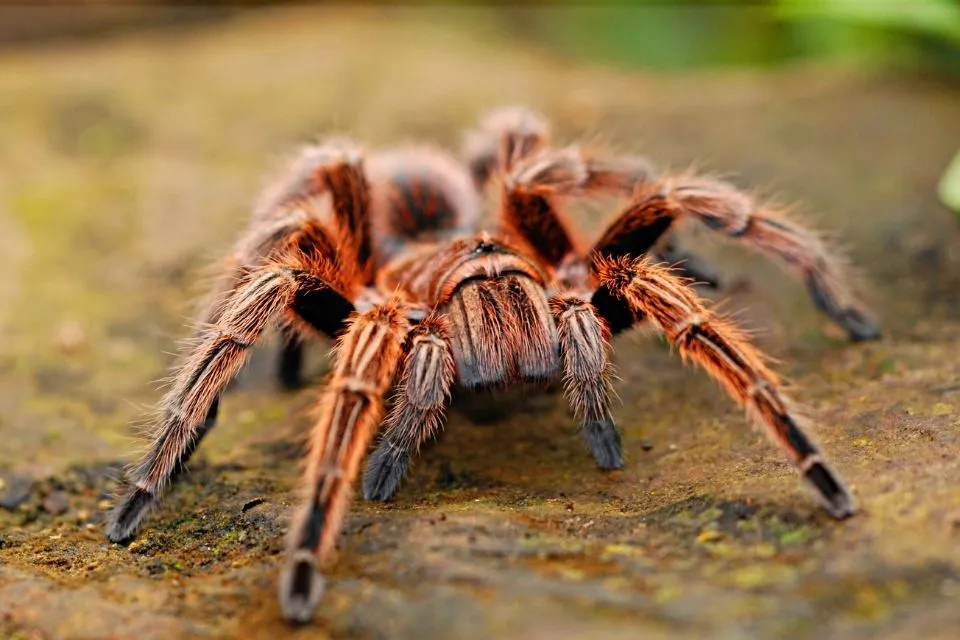
Rose Hair Tarantulas originate from the arid and semi-arid regions of Chile, Bolivia, and Argentina. In their natural habitat, they live in burrows or under rocks, where they find shelter from the sun and predators. These environments are typically dry with moderate temperatures, reflecting the importance of these factors in their care. The ability to replicate these conditions is essential for the well-being of your pet tarantula. The landscape where they live usually consists of sparse vegetation, making it important to understand that they don’t require a lush, humid environment. Understanding their origin helps in providing the best possible setup for them.
Appearance and Characteristics
Rose Hair Tarantulas are known for their distinctive appearance. They have a reddish-brown coloration, with the hairs on their abdomen and legs exhibiting a rose-pink hue, giving them their common name. They typically have a leg span that ranges from 4 to 6 inches, making them relatively large spiders. Females are generally larger and live longer than males. Their bodies are covered in urticating hairs, which they can flick off as a defense mechanism. While they are not considered aggressive, they can bite if provoked, though their venom is not considered dangerous to humans. It is more akin to a bee sting. Knowing these characteristics will help you identify and differentiate your pet.
Setting Up Your Rose Hair Tarantula Habitat
Creating a suitable habitat is essential for the health and happiness of your Rose Hair Tarantula. The enclosure should provide a comfortable environment that meets its needs for shelter, temperature, humidity, and security. The right setup will not only allow your tarantula to thrive but also enhance your enjoyment of observing it. This involves careful consideration of several factors, including the type of enclosure, substrate, temperature, and humidity levels. Following these guidelines will create a comfortable and safe home for your Rose Hair Tarantula.
Choosing the Right Enclosure
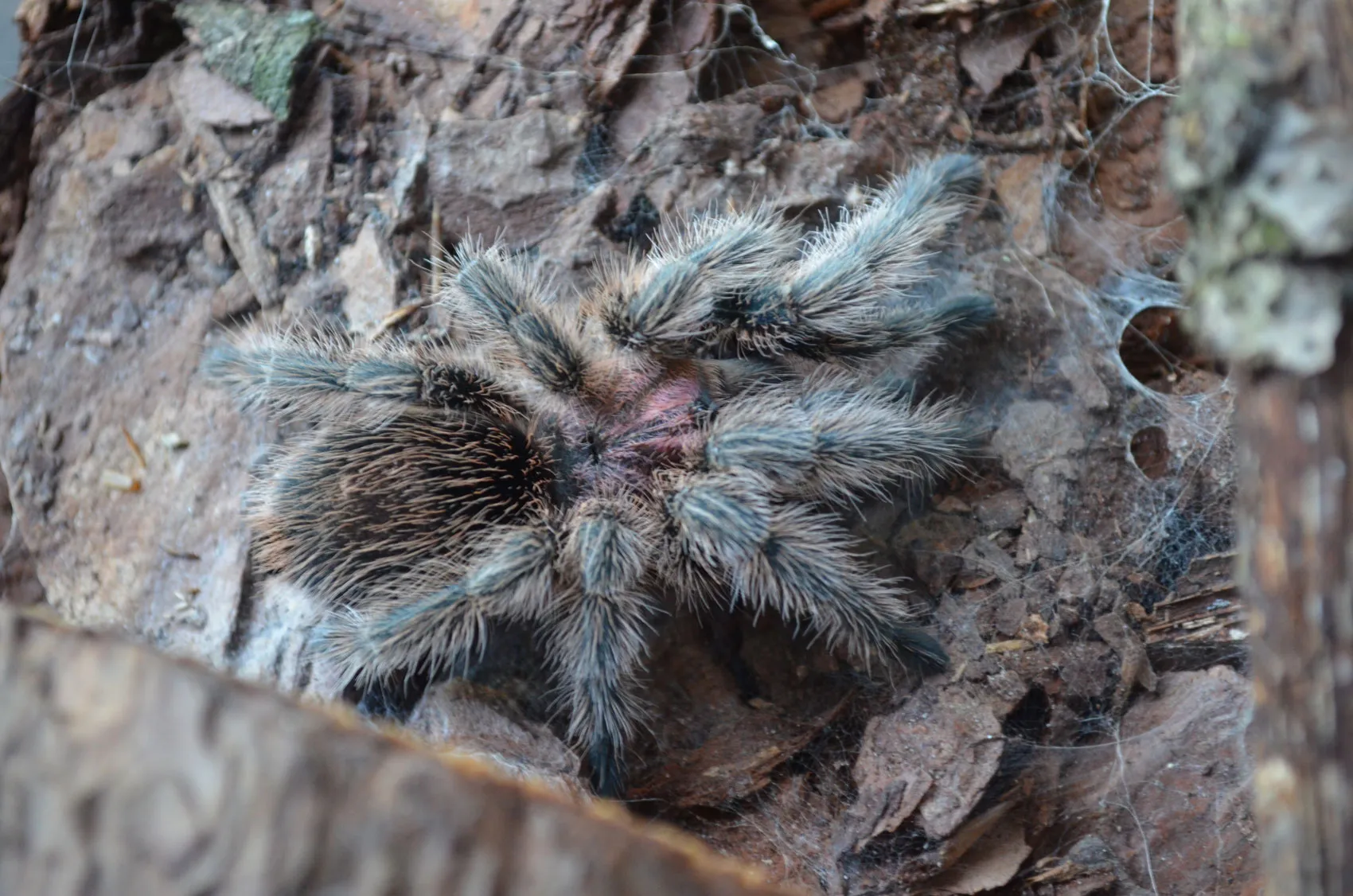
The enclosure should be appropriately sized for the tarantula. A good rule of thumb is to choose an enclosure that is at least three times the tarantula’s leg span in width. A 10-gallon tank is generally suitable for adults, while a smaller container may be sufficient for spiderlings. The enclosure should have a secure lid to prevent escape and adequate ventilation to prevent the buildup of humidity. Glass or acrylic tanks are both suitable options, but ensure the enclosure is well-ventilated to prevent excessive humidity, as this can lead to health problems. It’s also recommended to choose a front-opening enclosure for easier access and maintenance.
Substrate Selection
The substrate is the bedding material that lines the bottom of the enclosure and provides a natural environment for your tarantula. A suitable substrate should be able to retain some moisture while providing a surface for the tarantula to burrow, if it chooses. A mixture of peat moss, vermiculite, and coconut fiber is an excellent choice. The substrate should be deep enough for the tarantula to burrow comfortably, usually about 2-4 inches. Regularly check and replace the substrate to prevent mold and bacterial growth. Avoid using substrates like wood shavings or gravel, as they can be harmful to your tarantula. The proper substrate ensures the health of your tarantula.
Temperature and Humidity
Rose Hair Tarantulas thrive in temperatures between 70 and 85 degrees Fahrenheit (21-29 degrees Celsius). A heat lamp or a heat mat placed on the side of the enclosure can help maintain the desired temperature. Humidity levels should be relatively low, around 60-70%. You can monitor humidity with a hygrometer. Misting the enclosure lightly once or twice a week can help maintain the proper humidity level, but be careful not to over-saturate the substrate. Provide a shallow water dish for hydration, ensuring it is always clean and accessible. Careful monitoring and adjustment of these factors is vital to your tarantula’s well-being.
Essential Equipment
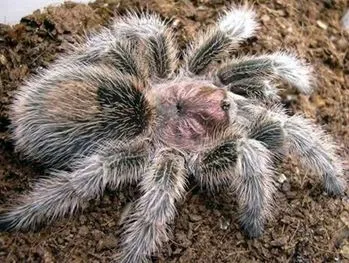
In addition to the enclosure and substrate, several other pieces of equipment are essential. A shallow water dish is crucial for providing a constant source of fresh water. A hide, such as a piece of cork bark or a half-log, is important for providing a secure place for the tarantula to retreat. A hygrometer is necessary for measuring humidity levels, and a thermometer to monitor the temperature. You may also want to include a small, shallow dish for food. Ensure the enclosure is placed in a location away from direct sunlight, drafts, and loud noises. These essential items will promote a comfortable and safe environment for your tarantula.
Feeding Your Rose Hair Tarantula
Proper nutrition is crucial for your Rose Hair Tarantula’s health and growth. Understanding what to feed, how often to feed, and how much to feed will help ensure your tarantula receives the nutrients it needs to thrive. While Rose Hair Tarantulas are relatively easy to feed, it is important to provide a balanced diet to maintain their health and vitality. This involves selecting the right types of food and following a regular feeding schedule. Proper feeding is essential to the long-term health of your pet.
What to Feed Your Tarantula
Rose Hair Tarantulas are primarily insectivores, meaning their diet should consist mainly of insects. Crickets, mealworms, and roaches are excellent choices. You can also offer other insects, such as super worms or waxworms, as treats. It’s important to gut-load the insects before feeding them to your tarantula. Gut-loading involves feeding the insects nutritious food, such as vegetables and fruits, before offering them to the tarantula. This enhances the nutritional value of the insects. Avoid feeding wild-caught insects, as they may contain pesticides or parasites. Always ensure that the insects are free from any harmful substances. This ensures the best nutrition for your pet.
Feeding Frequency and Amount
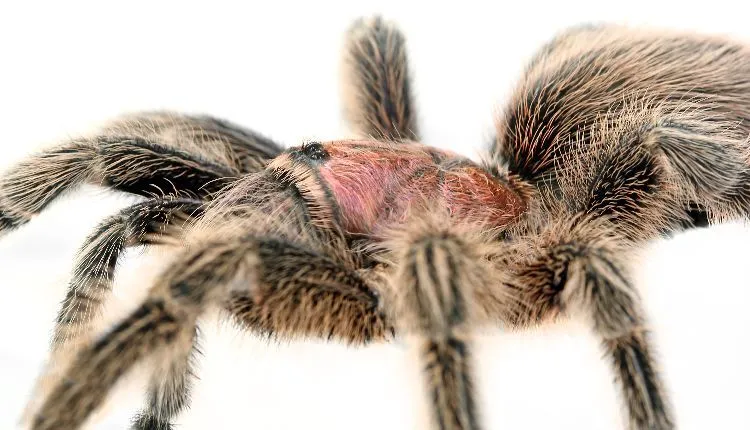
The feeding frequency depends on the age of the tarantula. Spiderlings should be fed more frequently, usually every other day. Sub-adults can be fed about twice a week, while adults can be fed once or twice a week. Adjust the feeding schedule based on the tarantula’s appetite and body condition. The amount of food should be appropriate for the tarantula’s size. Offer one or two insects per feeding, and remove any uneaten food within 24 hours to prevent mold and mites. If the tarantula refuses to eat, it may be in pre-molt or simply not hungry. Never overfeed your tarantula. A proper feeding schedule is crucial for your pet’s health.
Water and Hydration
Provide a shallow water dish with fresh water at all times. The water should be clean and accessible. Change the water regularly to prevent bacterial growth. You can also mist the enclosure lightly, but avoid oversaturating the substrate. Tarantulas absorb water through their food and by drinking. Ensure the water dish is always filled. Hydration is just as important as feeding and contributes to the overall health and molting process. Proper hydration will ensure your tarantula remains healthy.
Handling and Safety
Handling a Rose Hair Tarantula should be done with caution and respect. While they are known for their docile nature, it is crucial to prioritize safety. Always wash your hands before and after handling to avoid transferring any substances to the tarantula or yourself. By understanding the risks and following these guidelines, you can minimize the risk of harm to both yourself and your tarantula. Responsible handling promotes the safety of the animal.
Handling Guidelines
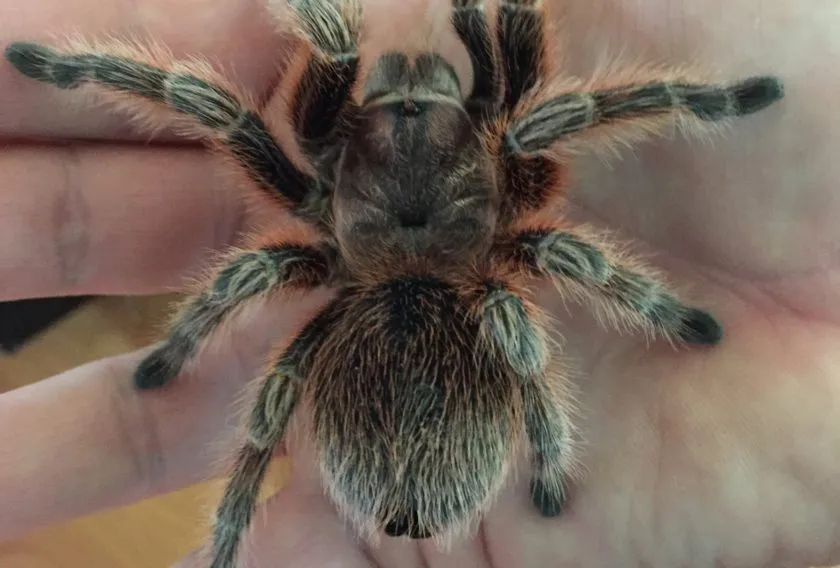
If you choose to handle your Rose Hair Tarantula, do so with caution. Start by gently coaxing the tarantula onto your hand. Avoid sudden movements and always keep your hands close to a surface, such as a table or the floor, in case the tarantula falls. Never handle a tarantula if you are nervous or anxious, as your movements may startle it. Handle your tarantula only when necessary, as too much handling can stress it. Always supervise children when they are near the tarantula. Proper handling reduces the risks to both you and your pet.
Recognizing Stress Signals
Tarantulas can exhibit certain behaviors when they are stressed or feel threatened. Be aware of these signs, such as lifting their front legs, flicking urticating hairs, or a defensive posture. If your tarantula displays any of these behaviors, it’s best to leave it alone and allow it to calm down. Constant stress can impact your tarantula’s health. Recognizing stress signals can help you protect your pet.
Health and Common Issues
Like any pet, Rose Hair Tarantulas can experience health problems. Being aware of common issues and understanding how to address them is important for providing proper care. Regular observation and monitoring can help detect potential issues early, increasing the chances of successful treatment. The following sections will cover molting, common health problems, and other related factors for your pet’s health.
Molting Process
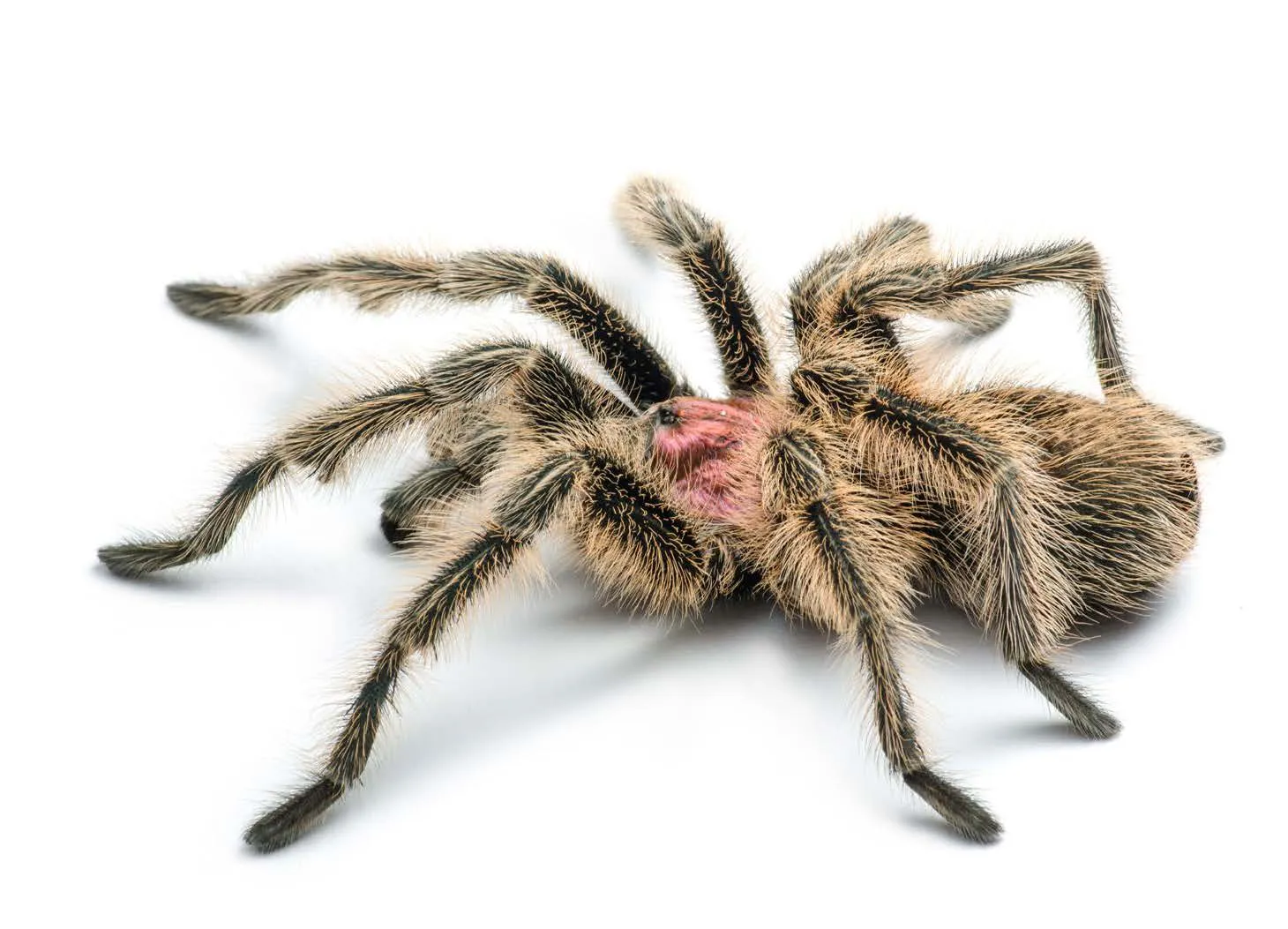
Molting is a natural process where tarantulas shed their exoskeleton to grow. During this process, your tarantula may stop eating and become less active. Provide a humid environment during the molt, and do not disturb the tarantula. After molting, the tarantula will be vulnerable until its new exoskeleton hardens. Do not feed the tarantula for a few days after molting, allowing its fangs to harden properly. Molting is a critical process in the life of a tarantula. Proper care during molting ensures the health and well-being of your pet.
Common Health Problems
Some common health problems include dehydration, fungal infections, and mites. Dehydration can be prevented by providing access to fresh water and maintaining proper humidity. Fungal infections can occur if the enclosure is too humid or poorly ventilated. Mites can infest the tarantula and its enclosure. Inspect the tarantula and enclosure regularly for signs of these problems. If you suspect your tarantula is sick, consult a veterinarian with experience in exotic animals. Knowing about potential health problems is key to providing preventative care.
Lifespan and Behavior
Understanding the lifespan and behavior of Rose Hair Tarantulas can help you provide the best possible care. Knowing what to expect in terms of their growth, activity levels, and overall personality will enhance your enjoyment of this unique pet. Learning about their lifespan and behavior ensures you have a deeper appreciation for your pet.
Rose Hair Tarantula Lifespan
Female Rose Hair Tarantulas can live for up to 20 years or more, while males typically have a shorter lifespan, living for around 5-10 years. This difference is a significant consideration if you are looking for a long-term pet. Provide the best possible care from the start to give your pet the longest and healthiest life possible. Understanding the lifespan is important when making a long-term commitment to owning a tarantula.
Typical Behavior Patterns
Rose Hair Tarantulas are generally docile and can be handled, although it is not always recommended. They are mainly active at night and may spend most of the day hiding in their burrow or under a hide. They can be observed feeding, sometimes eating crickets and other insects directly. Each tarantula has its own unique personality, so observing their behavior is a great way to learn more about them. Watching your tarantula’s behavior will help you create a close bond with your pet.
Conclusion
Caring for a Rose Hair Tarantula can be a rewarding experience. By following the guidelines in this article, you can create a healthy and enriching environment for your pet. Remember that providing proper care and understanding their needs is essential. With the right knowledge, your Rose Hair Tarantula can be a fascinating and enjoyable companion for many years. Consistent care is essential for ensuring your tarantula lives a long, healthy life.
Summary of Rose Hair Tarantula Care
In summary, proper Rose Hair Tarantula care involves creating a suitable habitat, providing a balanced diet, and handling your pet with caution. Regular observation, preventative care, and understanding of your tarantula’s needs are crucial for its well-being. With the right knowledge and dedication, you can enjoy the fascinating world of Rose Hair Tarantulas for years to come. These incredible creatures make great pets for those who are willing to provide the proper care.
